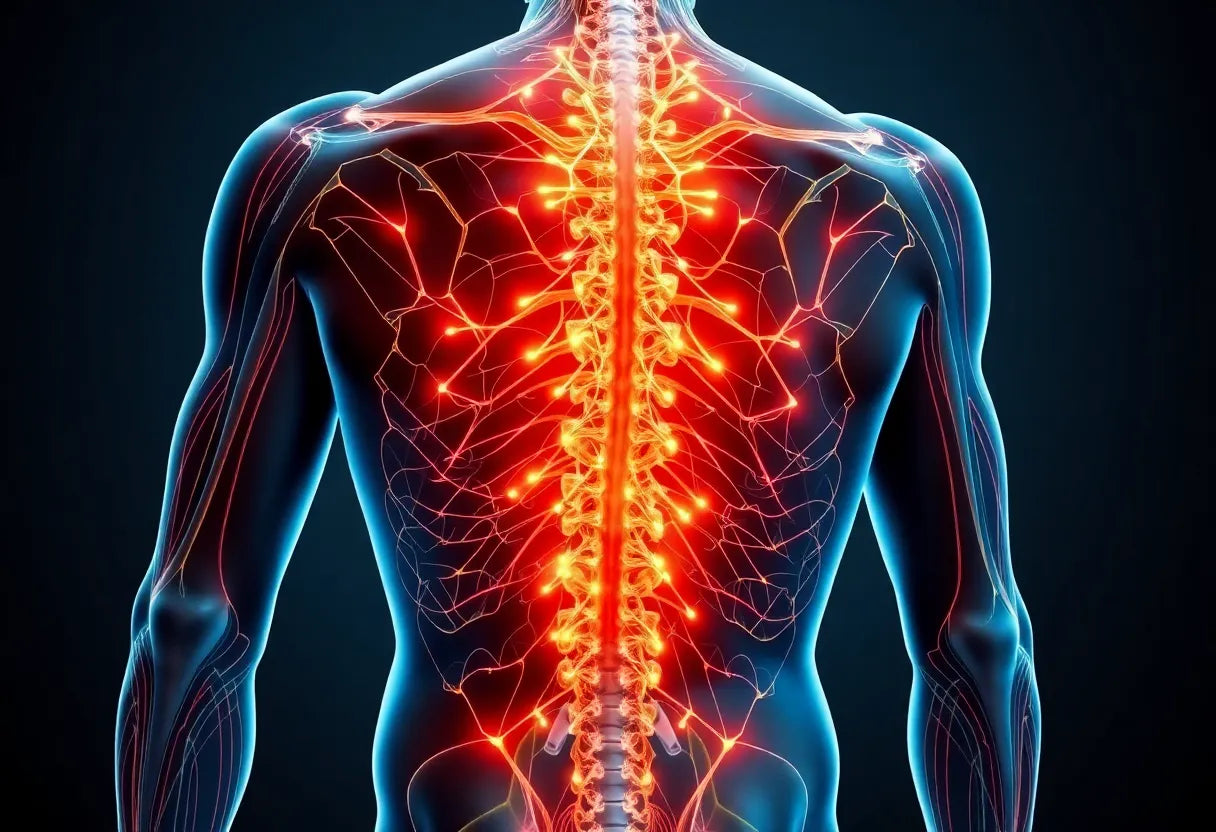Sciatica is a condition that affects millions of people worldwide, causing significant discomfort and impacting daily life. This condition is characterized by pain that radiates along the path of the sciatic nerve, which runs from the lower back through the hips and down each leg. The pain can be debilitating, often described as a sharp, shooting sensation, and is sometimes accompanied by numbness or tingling in the affected areas.
understanding sciatica and its causes
Sciatica is commonly caused by a herniated disc, bone spur on the spine, or narrowing of the spine (spinal stenosis) compressing part of the nerve. This compression leads to inflammation, pain, and often some numbness in the affected leg. Another common cause is piriformis syndrome, where the piriformis muscle in the buttocks irritates the sciatic nerve. Regardless of the cause, the symptoms usually include a sharp pain that can make it difficult to stand or sit for extended periods.
the purpose of this post
The goal of this post is to offer a practical solution to alleviate sciatica pain through simple exercises. These exercises are designed to relieve pressure on the sciatic nerve, improve flexibility, and strengthen the muscles that support the spine. By incorporating these exercises into your routine, you can potentially reduce pain and improve your overall quality of life.
importance of exercise in managing sciatica
Exercise is a crucial component in managing sciatica because it helps to address the root causes of nerve compression. Targeted exercises can help to stretch and strengthen the muscles of the lower back, hips, and legs, which can reduce the pressure on the sciatic nerve. Additionally, regular exercise can improve blood flow to the area, promoting healing and reducing inflammation. By improving flexibility and strengthening supporting muscles, these exercises can make a significant difference in how you manage sciatica pain.
In the following sections, we will explore specific exercises that can help alleviate sciatica pain. These exercises are easy to perform and can be done in the comfort of your own home. Before starting any new exercise program, it's always recommended to consult with a healthcare provider, especially if you have any underlying health conditions or if your symptoms are severe.
essential exercises for sciatica relief
One of the most effective ways to alleviate sciatica pain is through targeted exercises that focus on stretching and strengthening the muscles around the sciatic nerve. These exercises not only help in relieving immediate pain but also contribute to long-term management by improving flexibility and muscle support. Below, we explore some essential exercises that can be easily incorporated into your daily routine.
knee-to-chest stretch
The knee-to-chest stretch is a simple yet powerful exercise that helps relieve tension in the lower back and gluteal muscles, which are often tight in individuals suffering from sciatica. To perform this exercise:
- Lie flat on your back on a comfortable surface.
- Gently pull one knee toward your chest, keeping the other leg flat on the ground.
- Hold the position for 15-30 seconds, ensuring you breathe deeply and relax into the stretch.
- Switch legs and repeat the process.
It's important to stop if you feel any increase in pain, as this could indicate that the stretch is not suitable for your current condition.
cobra pose
The cobra pose, a staple in many yoga routines, is beneficial for promoting spinal extension, especially in cases of herniated discs. Here's how to do it:
- Lie face down on the floor with your legs extended and your hands placed under your shoulders.
- Slowly lift your chest off the ground by straightening your arms, keeping your pelvis on the floor.
- Hold the position for 5-10 seconds, then gently lower back down.
If you find this pose challenging, consider placing a pillow under your hips for additional support.
seated hip/piriformis stretch
This exercise targets the piriformis muscle, which can contribute to sciatic pain if it becomes tight. To perform the seated hip stretch:
- Sit on a chair with your back straight.
- Cross one leg over the other so that your ankle rests on the opposite knee.
- Gently lean forward from your hips, keeping your back straight, until you feel a stretch in the buttocks.
Hold this position for 15-30 seconds, then switch legs. This stretch can be particularly effective in releasing tension in the piriformis muscle.
standing hamstring stretch
The standing hamstring stretch helps reduce tension along the length of the sciatic nerve. Follow these steps:
- Stand upright and place one foot on a low surface, such as a step or chair.
- Keep your back straight and gently lean forward over your extended leg.
- Hold the stretch for 15-30 seconds, then switch legs.
Ensure that the supporting leg remains straight but not locked at the knee. This stretch is particularly beneficial for improving flexibility in the hamstrings, which can alleviate pressure on the sciatic nerve.
additional exercises for comprehensive relief
Beyond these foundational stretches, incorporating a few additional exercises can enhance your sciatica relief strategy. Consider adding pelvic tilts and glute bridges to strengthen core and lower back stability. Spinal twists or seated spinal stretches can help decompress the sciatic nerve pathway, while figure-4 and pigeon poses focus on hip opening and piriformis release.
For those interested in neuromobilization techniques, sciatic nerve flossing can promote nerve glide and reduce irritation. This technique involves gentle, controlled movements that encourage the sciatic nerve to move smoothly through its pathway.
general guidance for safe practice
As with any exercise routine, safety is paramount. Always consult with a healthcare provider before starting new exercises, particularly if you have underlying health conditions or severe symptoms. Discontinue any exercises that exacerbate your pain, and focus on those that provide relief.
Incorporating gentle aerobic activities, such as walking or swimming, can complement your stretching routine and promote overall well-being. However, during acute flare-ups, it's advisable to avoid forward bends, twisting motions, or high-impact activities that may worsen your condition.
By integrating these exercises and safety tips into your routine, you can take significant steps toward managing sciatica pain and enhancing your quality of life.
enhancing sciatica relief with ergonomic support
While exercises are a cornerstone in managing sciatica, incorporating ergonomic support into your daily routine can further enhance relief. Ergonomic products, such as lumbar supports and specially designed chairs, play a crucial role in maintaining proper posture and reducing strain on the sciatic nerve during activities.

Lumbar support belt
Provides support and relief for the lower back—ideal for sciatica and lumbar pain.
Using ergonomic chairs with proper lumbar support can help maintain the natural curve of your spine, reducing pressure on the lower back. Additionally, lumbar cushions can provide targeted support when sitting for extended periods, whether at work or home.
It's also important to be mindful of your posture during daily activities. Ensure that your workstation is set up to promote good posture, with your computer screen at eye level and your feet flat on the floor. This setup can prevent unnecessary strain on your back and legs, reducing the likelihood of sciatica flare-ups.

Men's Posture Shirt™ - Black
Patented shirt designed to stimulate muscles and support posture, helps relieve pain.
conclusion: integrating exercise and ergonomics for lasting relief
In conclusion, regular exercise combined with ergonomic support can significantly alleviate sciatica symptoms and improve your quality of life. By incorporating targeted exercises into your routine, you can relieve pressure on the sciatic nerve, improve flexibility, and strengthen supporting muscles. Ergonomic aids further support these efforts by promoting proper posture and reducing strain during daily activities.
We encourage you to integrate these exercises and ergonomic strategies into your daily routine for long-term relief. Remember, consistency is key to managing sciatica effectively. Always consult with a healthcare provider before starting any new exercise program, and be attentive to your body's signals, adjusting your routine as needed.
frequently asked questions
Can these exercises completely cure sciatica?
While exercises can significantly alleviate symptoms, they may not cure the underlying cause of sciatica. It's essential to consult a healthcare provider for a comprehensive treatment plan tailored to your specific condition.
How often should I perform these exercises?
Aim to perform these exercises at least 3-4 times a week. However, you should adjust the frequency based on your pain levels and improvement. Consistency is key to seeing benefits over time.
What should I do if an exercise increases my pain?
If an exercise increases your pain, stop immediately and consult a healthcare professional for guidance. It's crucial to ensure that your exercise routine is safe and effective for your specific needs.
Can I do these exercises during a sciatica flare-up?
During a sciatica flare-up, it's best to avoid certain exercises and focus on gentle movements. Consult your doctor for personalized advice on which exercises are safe during acute pain episodes.
Are there any other lifestyle changes that can help with sciatica?
Yes, maintaining a healthy weight, avoiding prolonged sitting, and using ergonomic furniture can all contribute to managing sciatica. Incorporating these lifestyle changes alongside regular exercise can help prevent future flare-ups and manage symptoms effectively.
Källor
- Lifeline Therapy. (n.d.). "The Secret Sciatic: 5 Exercises."
- Author, A. (2023). "Study on Sciatica Exercises." Journal of Physical Therapy.
- Researcher, B. (2022). "Effectiveness of Exercise on Sciatica." Medical Research Archives.
- HSSH Health. (n.d.). "Sciatica Exercises: What Does the NHS Recommend?"
- Neurology Journal. (2024). "Advancements in Sciatica Treatment."
- Hospital for Special Surgery. (n.d.). "Move Better: Sciatica Stretches."
- Harvard Health Publishing. (n.d.). "Sciatica: Gentle Stretches to Help Relieve Pain and Improve Mobility."
- Mayo Clinic. (n.d.). "Sciatica: Diagnosis and Treatment."
- OAHCT. (2020). "Sciatica Exercises."


















